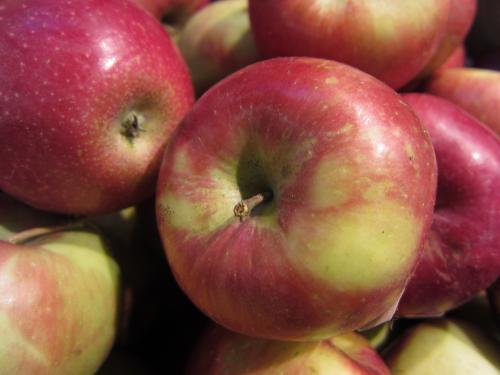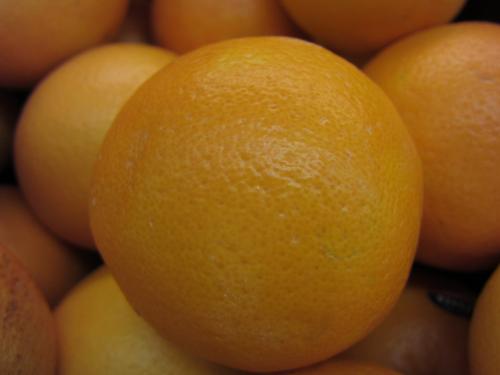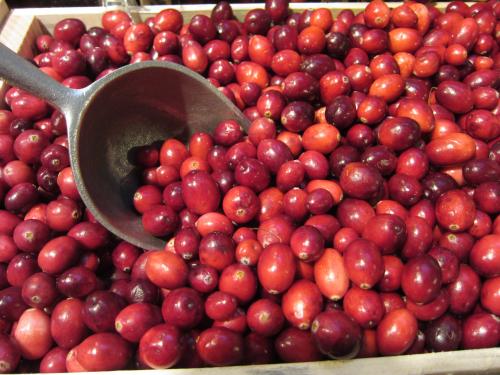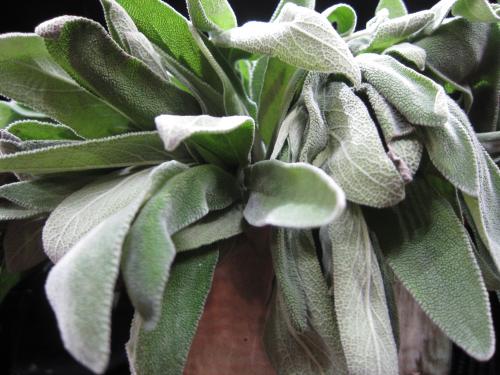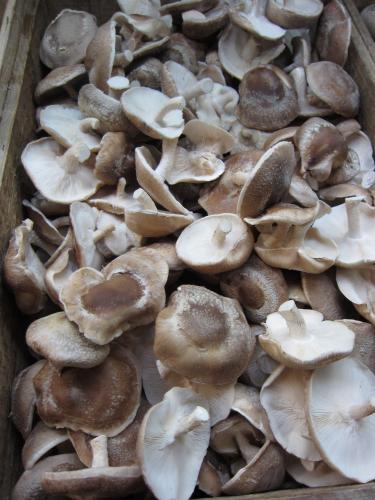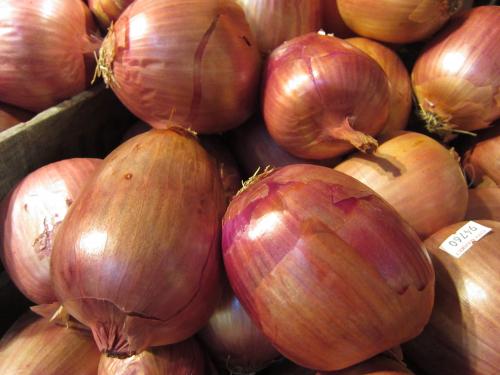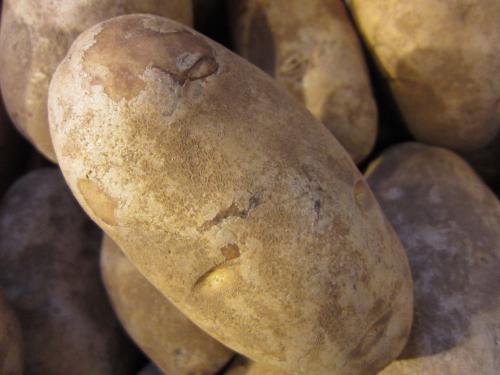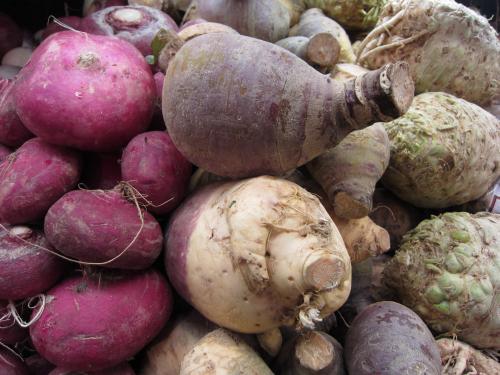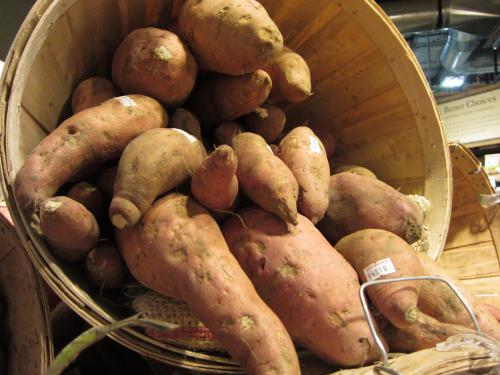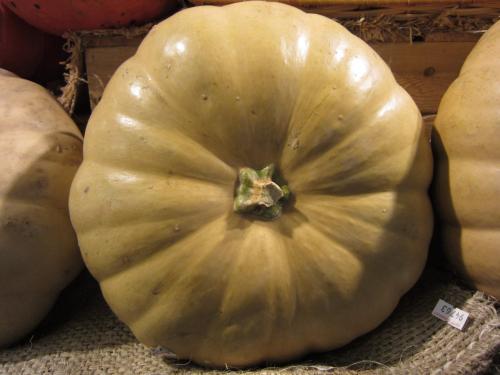Thanksgiving Produce Guide
Looking for a particular variety of onion, or the best apples for pie, as you’re running down your Thanksgiving shopping list? We've got a guide for frequently asked questions about varieties of Produce and tips for how to use them in preparing a bountiful Thanksgiving meal. Pick one up in the Produce department today, print one from our website, or scroll down to view the information.
Apples
Apples play a starring role in apple pie and can also make appearances in various side dishes on Thanksgiving.
1 pound=2 large apples=2 cups cored and sliced
6 cups cored and sliced=standard pie recipe
Best pie apples: Choose a mixture of tart and sweet apples. Choose more tart/tannic apples than sweet apples for the best balance of flavors and texture Examples:
Tart: Northern Spy, Mutsu (and many heirloom varieties)
Sweet: McIntosh, Macoun
Tart apples are also good added to bread stuffing or wild rice pilaf and to flavor the cavity of a turkey or placed in the bottom of the turkey-roasting pan.
Best apples diced raw in salads and side dishes - firm (particularly tossed with a squeeze of citrus to keep the apples from discoloring): Mutsu
Best apples for applesauce and cranberry-applesauce - soft: McIntosh
Citrus
Lemons and oranges can brighten the earthy flavors of a Thanksgiving meal. Wash first. Be sure to remove zest of lemons/oranges before juicing, when a recipe calls for both!
To season turkey: Rub outside of turkey with lemon or orange zest. Slice lemons or oranges and place on the outside of the turkey for extra moisture and flavor, inside the cavity to brighten the flavors of the juices, or under the turkey for moisture and juiciness. Long, slow roasting caramelizes lemons and brings out their sweetness (just be sure to remove the seeds!)
To flavor roasted roots: Quarter a lemon and toss with chopped root vegetables when roasting to brighten flavors (remove lemon before serving)
To flavor vinaigrette: A basic vinaigrette of 3 parts olive oil to 1 part lemon juice is a great base for a dressing you toss on warm green beans, Brussels sprouts, or finely chopped kale or radicchio/endive salad
To flavor cranberry sauce:Orange juice and zest can be used in place of water to cook cranberries; zest adds extra flavor
To flavor sweet potatoes:A combination of orange juice and orange zest combined with butter and maple syrup can be used to glaze sliced sweet potatoes for a delicious side dish
To add sparkle to vegetables: Grate a little orange zest or lemon zest and add to warm string beans, Brussels sprouts, or a leafy green salad.
Cranberries
Cranberry sauce comes together in a snap and can be made up to 5 days ahead; serve chilled or at room temperature.
1 pound=4 cups fresh cranberries=serves 6-8
For cooked cranberry sauce: Put a little water, apple cider, or orange juice in the bottom of a pan, add 1 pound cranberries, and cook, partially covered, until cranberries pop and the liquid thickens, about 10 minutes, stirring occasionally. Sweeten to taste with honey, maple syrup, or sugar (1/2 cup makes a tart cranberry sauce). Add grated ginger, diced apples, or orange zest for added flavor.
For fresh cranberry sauce: Grind 1 pound cranberries with a quartered/seeded orange, quartered/seeded lemon, and fresh apple until coarse consistency is reached; blend ¼ of the mixture more finely and place in serving bowl with about 1 cup sugar or to taste, plus chopped walnuts, if desired. Serve chilled.
Herbs
Rosemary, sage, and thyme are classic Thanksgiving flavors for turkey, gravy, and stuffing; parsley adds sparkle at the end. Leave stems on to make stock or season a turkey cavity, but be sure to remove stems when mincing.
1 Tbs. fresh minced herbs = about 1 tsp. dried
To season turkey: Place a handful of whole herbs with their stems inside cavity of turkey; look for a pre-made bouquet garni of rosemary, sage and thyme
To make herbed gravy: Add finely minced rosemary, sage, and thyme to gravy while cooking; add minced parsley right before serving
To season stuffing: Add finely minced herbs to stuffing or wild rice pilaf while cooking
To add sparkle when serving:Set aside some minced fresh herbs and sprinkle on the dish just before serving: Curly parsley is very pretty minced and goes with just about everything – sprinkle it on mashed potatoes, stuffing, Brussels sprouts, roasted roots, gravy, salads, and more.
Mushrooms
Mushrooms are great stuffed as an appetizer, as an earthy flavor in stuffing, and as the main ingredient in vegetarian gravy.
1 pound mushrooms = 6 cups sliced
½ pound fresh mushrooms=1 ounce dried mushrooms
Fresh mushrooms: Crimini are a good all-purpose mushroom with a soft texture and mild flavor that is good in creamy sauces; for a mushroom that lends a chewier, meatier texture, try shiitakes, chanterelles, or portabellas
Dried mushrooms: A handful of dried mushrooms can be soaked in boiling water or vegetable stock to reconstitute them. This makes a rich, earthy-flavored liquid that can be used as the basis for gravy. They have a nice, chewy texture when reconstituted and rich flavor.
Onions
Onions accentuate the flavors of other dishes and can also be the main attraction in a side dish or vegetarian entrée.
Cipollini onions– small, flattened onions that are high in residual sugars which makes them great for roasting or caramelizing
Leeks– have a milder, sweeter flavor than onions; use just the white and light green part and slice in half lengthwise to wash well; delicious with apples in stuffing, braised as a side dish, or cooked in a tart or potato-leek gratin for a vegetarian entrée
Pearl onions– small and sweet, they are often served as a side dish with a sweet glaze. To prepare them for glazing, bring a pot of salted water to a boil. Add onions, and cook 3 minutes to loosen skins. Drain, and cool slightly. Slice top off root end, squeeze, and skins will slide off.
Red onions– both sharp and sweet tasting, their pretty purple color fades somewhat when cooked; mince and use raw in salad and side dishes for added color; also complement roasted roots and winter squashes
Shallots–sweeter and more pungent flavor than onions; they pair well with apples and thyme to flavor stuffing, and are great caramelized and added to string beans or Brussels sprouts
Sweet onions(Walla Walla, Vidalia) – these have a sweeter flavor without the astringent bite of other onions; mince or slice raw in salads, or anywhere you want a silky and sweet onion flavor
White onions– tend to have a sharper and more pungent flavor; mince raw to flavor vinaigrette for salads and side dishes
Yellow onions– all-purpose onion with a sweet and earthy flavor that becomes sweeter when cooked
Potatoes
Thick-skinned potatoes are generally soft and mash easily, but for added flavor and color, look beyond Russet potatoes:
1 pound=3 cups sliced=2 cups mashed
Best potatoes for mashing or frying (dry and fluffy): Russet, Chef
Best potatoes for roasting or chunkier mashed potatoes (moist and flavorful): German Butterball, Red potato, Yukon, Nicola, Fingerling
For purple, red, or pink mashed potatoes: Purple potatoes, All Red potatoes, Mountain Rose potatoes
Roots
Local root vegetables add color and flavor to the Thanksgiving table.
To roast:Peel and cut a mixture of root vegetables, such as carrots, rutabagas, parsnips, kohlrabi, and beets into 1-inch chunks. Toss with oil and salt at 400 degrees until tender, 30-50 minutes depending on variety. Roast beets separately if you don’t want their color to stain everything red!
To mash: Peel and cut root vegetables into chunks and cook in boiling water with potatoes. When tender, drain and mash together with butter, heavy cream, and salt. Turnips, celeriac, and parsnips are great additions to mashed potatoes.
To serve raw: Consider thin slices of raw or lightly pickled radishes on the Thanksgiving table or a grated carrot slaw (with added ginger for kick).
Sweet Potatoes
Sweet potatoes add a bright orange note to any Thanksgiving meal; choose moist, soft-fleshed varieties for mashing and firmer sweet potatoes for baking or roasting
Garnet– a soft variety that is great for mashing with a deep orange color
Jewel– a firm variety that is good for baking and roasting with a slightly nutty taste
Locally-grown varieties (seasonally available)
Beauregard – a firmer variety of sweet potato that often has an elongated shape and reddish skin; its lower sugar content and nutty taste make it good for roasting and baking
Covington – a soft-fleshed sweet potato; good all-purpose mashing potato with a sweet taste
Orleans – very similar to Beauregard, consistent shapes make them easy to handle; good for roasting and baking
Burgundy – a sweet variety with deep orange flexh and red skin; good for mashing
Winter Squash & Pumpkins
To prepare any winter squash or pumpkin for cooked puree, simply slice in half, remove seeds, and place cut-side down in a 350° oven for about 45-60 min., or until tender all the way through when pierced with a fork. Mash well with a fork or in the blender.
1 pound pumpkin=1 cup cooked pumpkin
2 cups cooked pumpkin (1 15-oz can)=standard pumpkin pie recipe
Best pie varieties: Pie pumpkin(soft and moist), Butternut squash (silky and more delicate flavor)
Best soup varieties (bake round varieties in oven first and make puree for ease of handling; simple peel and dice long-necked squash): Cinderella pumpkin, Kuri squash, Butternut squash
Best baking varieties(slice in half and bake with a little butter and maple syrup): Sweet dumpling, Acorn, Buttercup, Carnival squash
Best roasting varieties(cube and roast with olive oil and sea salt): Butternut squash (peel removed), Delicata (peel-on)
And don't forget Brussels Sprouts! To ensure they do not turn out bitter, roast them in the oven at 400 degrees F with olive oil, salt, and pepper.
And don't forget that Produce staff members are happy to cut up squash for you upon request.
